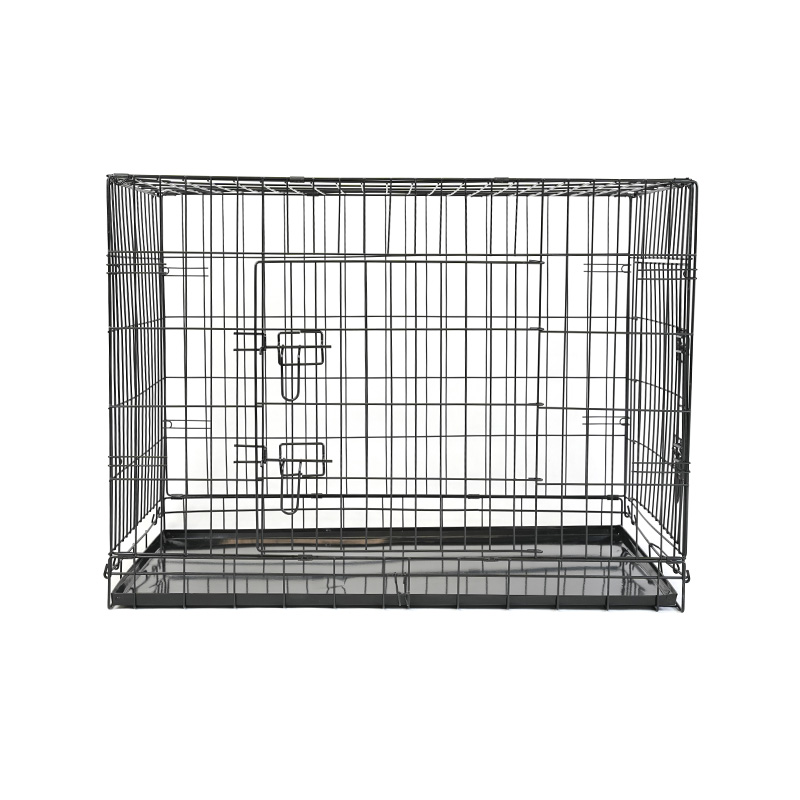- Type:
- Industry News
- Date
- 2025-Nov-10
Why Should You Consider a 42-Inch Inclined Roof Dog Crate for Your Pet?
Understanding the Advantages of an Inclined Design Crate
The traditional box-shaped crate has long been a standard for pet containment, but the inclined roof design offers a set of distinct benefits that cater to both the pet's comfort and the owner's aesthetic preferences. This design provides additional headroom towards the rear of the crate, which is particularly advantageous for larger dog breeds that enjoy stretching out or for those who prefer to sit upright without their ears touching the top. The slanted profile is not merely a functional upgrade; it also presents a more modern and less obtrusive silhouette that can blend more seamlessly with contemporary home furniture. For dogs that may experience anxiety in enclosed spaces, the unique geometry of the crate can create a less confined feeling, promoting a greater sense of security and calm. The psychological comfort derived from a well-designed space should not be underestimated, as it directly contributes to a more positive association with crate time, making it a sanctuary rather than a punishment.
A Step-by-Step Guide to Assembling Your 42-Inch Dog Cage
Assembling a large dog crate can seem like a daunting task, but with a systematic approach, the process can be straightforward and efficient. Begin by carefully unpacking all the components and laying them out on a soft surface, such as a carpet or a blanket, to prevent scratching the finish or your floors. Most models consist of two side panels, a front door panel, a rear panel, a roof, and a removable tray. The first step typically involves connecting the side panels to the front and rear panels, often by sliding the fitted tabs or hooks into their corresponding slots. Once the basic cube structure is stable, the next phase is to attach the inclined roof panel, ensuring that all locking mechanisms click securely into place. Pay close attention to the orientation of the roof, as the slanted side should align with the front of the crate where the door is located. Finally, insert the plastic tray at the bottom and double-check all connections to guarantee the structure is rigid and safe for your pet to use.
Effective Crate Training Techniques Using an Inclined Top Crate
Crate training is a fundamental process for housebreaking and providing a safe space for your dog, and the right crate can make a significant difference. The goal is to make the crate an inviting and positive environment, never a place associated with isolation or negativity. Start by placing soft bedding, a favorite toy, and perhaps an item with your scent inside the crate with the door left open, allowing your dog to explore it voluntarily. Encourage this exploration by tossing treats or feeding meals near and eventually inside the crate. The unique design of an inclined crate can be leveraged by placing cozy blankets at the deeper end, creating a den-like atmosphere that feels secure. When your dog enters the crate on its own, offer verbal praise and a treat. Gradually, you can begin closing the door for short periods while you are present, slowly increasing the duration. Consistency and patience are paramount, as forcing a dog into the crate or leaving it confined for too long can create lasting negative associations.
Choosing the Ideal Location for a Large Inclined Crate in Your Home
The placement of a large dog crate within your home is a critical decision that impacts your pet's well-being and your household's flow. The primary consideration should be to position the crate in a socially active area, such as a family room or a quiet corner of the living room, where your dog can feel part of the family activities without being in the direct path of foot traffic. This location helps prevent feelings of isolation and reinforces the crate as a normal part of its environment. Bedrooms are another excellent option, especially for dogs that sleep in their crates at night, as it strengthens the bond and provides them with a sense of security. It is crucial to avoid placing the crate in areas prone to extreme temperature fluctuations, such as direct sunlight next to a window or in a drafty hallway. Furthermore, ensure the location has good air circulation and is on a stable, level surface to prevent the crate from rocking.
Creative Ideas for Customizing Your Dog Crate's Appearance
A functional dog crate does not have to be an eyesore in your home decor. With a little creativity, you can transform it into a stylish piece that complements your interior design. One of the simplest and most effective methods is to select a color-coordinated crate mat or a custom-fit cushion that not only adds comfort but also a pop of color or texture. Throwing a durable, machine-washable blanket over the top and sides can instantly soften its industrial appearance, creating a more integrated look. For those who are particularly handy, building a simple wooden frame around the base or crafting a custom-fitted tabletop can turn the crate into a functional side table or console. This approach allows the crate to serve a dual purpose, providing a stable surface for lamps, books, or decor while seamlessly hiding the crate structure underneath, making it an attractive and practical piece of furniture.


 Inquiry
Inquiry

 English
English 中文简体
中文简体 Deutsch
Deutsch





